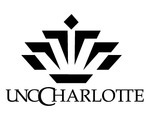The Memorial has been developed as a public space in which people can interact with the past and with each other. This public space wants to recreate on a psychological level a series of feelings and emotions that both the slaves and their masters had. The atmosphere is created only when individuals are interacting and participate to the activities held in this place.
The space is developed around two main paths, one is consider belonging to the slaves and the other one to the people that were chaining them. The paths are always crossing one to another so that the passerby can always switch path, to be in the flesh of a slave or a free man. At the public space level, the interaction between the two paths is made not only thru the intersections but also at a visual level, because the free people will always have the temptation to look up at the ‘slaves’ and the way that they are struggling to cross the path.
The crossing points of the two paths are creating a few ‘islands’ in the tissue of the space. In these ‘islands’ we can find tree different textures; one can be considered the sitting area, one the walking area and one is simply a green area.
The concept. Creating the memorial as a simple and clear public space that invites pedestrians to come and recreate the atmosphere of the forgotten times.
The site. The project is not making any suggestion about the site because it wants to be a public space that can cast over any free space, it might be a space in the heart of the city, it might be a space in the park.
The seating area can be considered the free peoples area. Simple blocks placed in this area can be moved all around, forming all kinds of designs that come ‘at hand’ to the people using the space in that moment. The blocks are engraved with a name of a formal slave so that the simple act of moving the blocks will have, after moving, a psychological impact on the individuals: they moved the block in their own benefit, like the free people were taking advantage from the slaves.
The walking area is made from a small field of tubes that interact with the individuals and with the mass of people that walk thru. They react with the movement and fluxes of people with vibration, sounds and light. So this area will be the area that will show one of the few liberties that the slaves had, singing and the interacting with each other.
The switching feeling is also created between the two areas.
The Slaves Path wants to recreate the struggle of the slaves, the uncertainty of every day in witch they had to live their life, a feeling almost strange to us these days. So the material that is proposed for this path is the non-Newtonian fluid.
What is the non-Newtonian fluid? A non-Newtonian fluid is a fluid with variable viscosity based on applied stress. Newtonian fluid, the stress introduced by the incoming force causes the atoms in the fluid to rearrange such that it behaves like a solid. Your hand will not go through. If you shove your hand into the fluid slowly, however, it will penetrate successfully. If you pull your hand out abruptly, it will again behave like a solid, and you can literally pull a bucket of the fluid out of its container in this way. So the path is made from a 15cm tick layer of non-Newtonian fluid on witch is laid an elastic layer that will keep the passing and the non-Newtonian fluid separated.
How will the path interact with the people? If moving fast, the liquid will behave almost as a solid so the walking will be almost normal; if moving slowly the path will behave as a liquid and the passing will curve the layers making them undulate and making walking harder.
The Free Path is a simple path with a granite pavement that is gravitating around the slaves path keeping it always under control and watching every move. At the crossings this path is superior to the other path, so she is the one that comes on the top.



